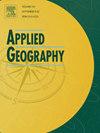数字技术创新的时空演化与数字化的多维机制
IF 5.4
2区 地球科学
Q1 GEOGRAPHY
引用次数: 0
摘要
推进数字技术是对当前技术革命和产业转型的重要战略回应,是创新地理学的一个研究热点。本研究分析了中国296个城市数字技术创新(DTI)的时空演变特征,采用面板回归模型探讨了数字化的多维赋能机制。结果表明,中国数字技术发明专利授权数量从2011年的46456件增加到2022年的404014件,年均增长率为21.73%。企业是DTI的核心行为体,特别是在数字产品制造领域。数字基础设施和数字经济产业对DTI的影响呈倒u型曲线,数字普惠金融对DTI的影响呈u型曲线。数字人才发挥着重要的促进作用。值得注意的是,多维数字化的影响在不同的数字产业和不同规模的城市之间存在差异。多维数字化通过极化和涓滴效应影响周边城市DTI,促进创新资源扩散。这些发现为促进数字技术创新提供了具体的指导。本文章由计算机程序翻译,如有差异,请以英文原文为准。
The spatiotemporal evolution of digital technology innovation and multidimensional mechanism of digitalization
Advancing digital technology represent a critical strategic response to the ongoing technological revolution and industrial transformation, constituting a research focus in innovation geography. This study analyses the spatiotemporal evolution of digital technology innovation (DTI) across 296 China cities, employing panel regression models to explore the multidimensional digitalization enabling mechanisms. The results show that the number of authorized digital technology invention patents in China increased from 46,456 in 2011 to 404,014 in 2022, representing an average annual growth rate of 21.73 %. Enterprises serving as the core actors of DTI, especially in digital product manufacturing. The impact of digital infrastructure and digital economy industry on DTI follows an inverted U-shaped curve, while digital inclusive finance demonstrates a U-shaped impact. Digital talent plays a significant facilitating role. Notably, the impacts of multidimensional digitalization vary across different digital industries and cities of varying sizes. Multidimensional digitalization influences DTI in surrounding cities through polarization and trickle-down effects, facilitating the diffusion of innovative resources. These findings provide specific guidance for promoting digital technology innovation.
求助全文
通过发布文献求助,成功后即可免费获取论文全文。
去求助
来源期刊

Applied Geography
GEOGRAPHY-
CiteScore
8.00
自引率
2.00%
发文量
134
期刊介绍:
Applied Geography is a journal devoted to the publication of research which utilizes geographic approaches (human, physical, nature-society and GIScience) to resolve human problems that have a spatial dimension. These problems may be related to the assessment, management and allocation of the world physical and/or human resources. The underlying rationale of the journal is that only through a clear understanding of the relevant societal, physical, and coupled natural-humans systems can we resolve such problems. Papers are invited on any theme involving the application of geographical theory and methodology in the resolution of human problems.
 求助内容:
求助内容: 应助结果提醒方式:
应助结果提醒方式:


